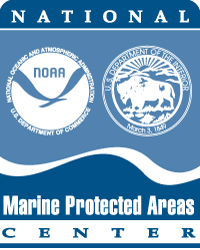Underwater Archaeology Training Case Study
A Resource by the Marine Protected Areas Federal Advisory Committee (These statements do not necessarily reflect the positions of NOAA or the U.S. Government)

In 2002 the Office of National Marine Sanctuaries initiated a volunteer diving program designed to train sport and technical divers in basic underwater archaeology methods and promote public "citizen-scientist" projects within the marine sanctuary system. In Alpena Michigan, NOAA diving instructors with the Thunder Bay National Marine Sanctuary trained groups of public divers to the equivalent NOAA diving certification. These divers then received Nautical Archaeology Society (NAS) Intro and Level One training from sanctuary instructors, learning the basics of site location and non-invasive hands-on documentation. Functioning as unpaid volunteers, these dive groups were then cleared to complete specific maritime archaeology projects on historic shipwrecks within the sanctuary at the direction of the site superintendent and cultural resources manager. The public dive groups received training (at no charge), "citizen-scientists" were actively engaged in the preservation of their own public archaeological resources, and the sanctuary benefited from the additional survey capacity and field data.
NOAA maritime archaeologists received advanced degrees at either East Carolina University's Maritime Studies Program or Texas A&M's Nautical Archaeology Program, and have also been licensed as NAS instructors by the Nautical Archaeology Society's training staff.
Similar training and capacity-building takes place at other sites within the sanctuary system. In Hawai`i NOAA provides a maritime archaeology instructor to the local university for the annual Maritime Archaeology Survey Techniques (MAST) course, a credited two-week classroom and field class culminating in the site assessment of previously undocumented submerged resources among the islands. In this case, the university science divers work directly with NOAA divers through a reciprocal agreement between the NOAA Diving Program and the University of Hawai`i Diving Safety Office. This arrangement addresses risk and liability concerns.
When NOAA archaeologists conduct training courses for public sport divers who do not have equivalent NOAA diving certificates nor are part of a university diving program, those divers may not participate directly in NOAA projects nor conduct surveys at the direction of any sanctuary staff. Why? It is a matter of risk and liability.
 Marine Protected Areas
Marine Protected Areas